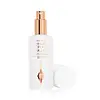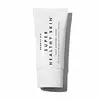What's inside
What's inside
 Key Ingredients
Key Ingredients

 Benefits
Benefits

 Concerns
Concerns

 Ingredients Side-by-side
Ingredients Side-by-side

Water
Skin ConditioningHomosalate
Skin ConditioningOctocrylene
UV AbsorberEthylhexyl Salicylate
UV AbsorberC12-15 Alkyl Benzoate
AntimicrobialButyl Methoxydibenzoylmethane
UV AbsorberButylene Glycol
HumectantCoconut Alkanes
EmollientGlycerin
HumectantSilica
AbrasiveCrambe Abyssinica Seed Oil
Skin ConditioningCetyl Alcohol
EmollientGlyceryl Stearate
EmollientCaprylyl Methicone
Skin ConditioningPotassium Cetyl Phosphate
EmulsifyingPEG-75 Stearate
Dimethyl Isosorbide
SolventPolysorbate 20
EmulsifyingPhenoxyethanol
PreservativeHydroxyacetophenone
AntioxidantMarrubium Vulgare Extract
Skin ConditioningCeteth-20
CleansingSteareth-20
CleansingCoco-Caprylate/Caprate
EmollientXanthan Gum
EmulsifyingCarbomer
Emulsion StabilisingDisodium EDTA
Rosa Damascena Extract
MaskingEthylhexylglycerin
Skin ConditioningSodium Hydroxide
BufferingBeta-Carotene
Skin ConditioningTocopherol
AntioxidantXanthophylls
Skin ConditioningMichelia Alba Leaf Oil
MaskingCitric Acid
BufferingHelianthus Annuus Seed Oil
EmollientRosmarinus Officinalis Leaf Extract
AntimicrobialSolanum Tuberosum Pulp Extract
SmoothingAcetyl Tetrapeptide-11
Skin ConditioningAcetyl Tetrapeptide-9
Skin ConditioningLinalool
PerfumingCitronellol
PerfumingGeraniol
PerfumingWater, Homosalate, Octocrylene, Ethylhexyl Salicylate, C12-15 Alkyl Benzoate, Butyl Methoxydibenzoylmethane, Butylene Glycol, Coconut Alkanes, Glycerin, Silica, Crambe Abyssinica Seed Oil, Cetyl Alcohol, Glyceryl Stearate, Caprylyl Methicone, Potassium Cetyl Phosphate, PEG-75 Stearate, Dimethyl Isosorbide, Polysorbate 20, Phenoxyethanol, Hydroxyacetophenone, Marrubium Vulgare Extract, Ceteth-20, Steareth-20, Coco-Caprylate/Caprate, Xanthan Gum, Carbomer, Disodium EDTA, Rosa Damascena Extract, Ethylhexylglycerin, Sodium Hydroxide, Beta-Carotene, Tocopherol, Xanthophylls, Michelia Alba Leaf Oil, Citric Acid, Helianthus Annuus Seed Oil, Rosmarinus Officinalis Leaf Extract, Solanum Tuberosum Pulp Extract, Acetyl Tetrapeptide-11, Acetyl Tetrapeptide-9, Linalool, Citronellol, Geraniol
Water
Skin ConditioningDimethicone
EmollientButylene Glycol
HumectantGlycerin
HumectantRicinus Communis Seed Oil
MaskingCaprylic/Capric Triglyceride
MaskingDipentaerythrityl Hexacaprylate/Hexacaprate
EmulsifyingDimethicone/Vinyl Dimethicone Crosspolymer
Skin ConditioningCetyl Alcohol
EmollientHydroxyethyl Acrylate/Sodium Acryloyldimethyl Taurate Copolymer
Emulsion StabilisingLauroyl Lysine
Skin ConditioningPhenoxyethanol
PreservativeSqualane
EmollientSaccharide Isomerate
HumectantButyrospermum Parkii Butter
Skin ConditioningPotassium Cetyl Phosphate
EmulsifyingAcrylates/C10-30 Alkyl Acrylate Crosspolymer
Emulsion StabilisingEthylhexylglycerin
Skin ConditioningPhysalis Angulata Extract
Skin ProtectingChlorphenesin
AntimicrobialPolysorbate 20
EmulsifyingPolysorbate 60
EmulsifyingSodium Hydroxide
BufferingDisodium EDTA
Sorbitan Isostearate
EmulsifyingCitric Acid
BufferingSodium Hyaluronate
HumectantSodium Citrate
BufferingTocopherol
AntioxidantCalendula Officinalis Flower Extract
MaskingDaphne Odora Callus Extract
Skin ProtectingAcetyl Tetrapeptide-2
Skin ConditioningDextran
Water, Dimethicone, Butylene Glycol, Glycerin, Ricinus Communis Seed Oil, Caprylic/Capric Triglyceride, Dipentaerythrityl Hexacaprylate/Hexacaprate, Dimethicone/Vinyl Dimethicone Crosspolymer, Cetyl Alcohol, Hydroxyethyl Acrylate/Sodium Acryloyldimethyl Taurate Copolymer, Lauroyl Lysine, Phenoxyethanol, Squalane, Saccharide Isomerate, Butyrospermum Parkii Butter, Potassium Cetyl Phosphate, Acrylates/C10-30 Alkyl Acrylate Crosspolymer, Ethylhexylglycerin, Physalis Angulata Extract, Chlorphenesin, Polysorbate 20, Polysorbate 60, Sodium Hydroxide, Disodium EDTA, Sorbitan Isostearate, Citric Acid, Sodium Hyaluronate, Sodium Citrate, Tocopherol, Calendula Officinalis Flower Extract, Daphne Odora Callus Extract, Acetyl Tetrapeptide-2, Dextran
Ingredients Explained
These ingredients are found in both products.
Ingredients higher up in an ingredient list are typically present in a larger amount.
Butylene Glycol (or BG) is used within cosmetic products for a few different reasons:
Overall, Butylene Glycol is a safe and well-rounded ingredient that works well with other ingredients.
Though this ingredient works well with most skin types, some people with sensitive skin may experience a reaction such as allergic rashes, closed comedones, or itchiness.
Learn more about Butylene GlycolCetyl Alcohol is a fatty alcohol. Fatty Alcohols are most often used as an emollient or to thicken a product.
Its main roles are:
Though it has "alcohol" in the name, it is not related to denatured alcohol or ethyl alcohol.
The FDA allows products labeled "alcohol-free" to have fatty alcohols.
Learn more about Cetyl AlcoholCitric Acid is an alpha hydroxy acid (AHA) naturally found in citrus fruits like oranges, lemons, and limes.
Like other AHAs, citric acid can exfoliate skin by breaking down the bonds that hold dead skin cells together. This helps reveal smoother and brighter skin underneath.
However, this exfoliating effect only happens at high concentrations (20%) which can be hard to find in cosmetic products.
Due to this, citric acid is usually included in small amounts as a pH adjuster. This helps keep products slightly more acidic and compatible with skin's natural pH.
In skincare formulas, citric acid can:
While it can provide some skin benefits, research shows lactic acid and glycolic acid are generally more effective and less irritating exfoliants.
Most citric acid used in skincare today is made by fermenting sugars (usually from molasses). This synthetic version is identical to the natural citrus form but easier to stabilize and use in formulations.
Read more about some other popular AHA's here:
Learn more about Citric AcidDisodium EDTA plays a role in making products more stable by aiding other preservatives.
It is a chelating agent, meaning it neutralizes metal ions that may be found in a product.
Disodium EDTA is a salt of edetic acid and is found to be safe in cosmetic ingredients.
Learn more about Disodium EDTAEthylhexylglycerin (we can't pronounce this either) is commonly used as a preservative and skin softener. It is derived from glyceryl.
You might see Ethylhexylglycerin often paired with other preservatives such as phenoxyethanol. Ethylhexylglycerin has been found to increase the effectiveness of these other preservatives.
Glycerin is already naturally found in your skin. It helps moisturize and protect your skin.
A study from 2016 found glycerin to be more effective as a humectant than AHAs and hyaluronic acid.
As a humectant, it helps the skin stay hydrated by pulling moisture to your skin. The low molecular weight of glycerin allows it to pull moisture into the deeper layers of your skin.
Hydrated skin improves your skin barrier; Your skin barrier helps protect against irritants and bacteria.
Glycerin has also been found to have antimicrobial and antiviral properties. Due to these properties, glycerin is often used in wound and burn treatments.
In cosmetics, glycerin is usually derived from plants such as soybean or palm. However, it can also be sourced from animals, such as tallow or animal fat.
This ingredient is organic, colorless, odorless, and non-toxic.
Glycerin is the name for this ingredient in American English. British English uses Glycerol/Glycerine.
Learn more about GlycerinPhenoxyethanol is a preservative that has germicide, antimicrobial, and aromatic properties. Studies show that phenoxyethanol can prevent microbial growth. By itself, it has a scent that is similar to that of a rose.
It's often used in formulations along with Caprylyl Glycol to preserve the shelf life of products.
Polysorbate 20 is made by combining ethoxylation of sorbitan, ethylene oxide, and lauric acid. It is a mild cleansing agent, surfactant, and emulsifier.
As a surfactant, it helps collect dirt and oils for washing. Emulsifiers prevent oils and water from separating.
Polysorbate 20 also adds scent to a product. Since it is made using sorbitol, it has a sweet scent. Sorbitol can also be found in fruits such as apples and peaches.
The lauric acid used to create Polysorbate 20 is often derived from coconuts.
Polysorbate 20 may not be fungal acne safe.
Learn more about Polysorbate 20Potassium Cetyl Phosphate is the potassium salt of a mixture. This mixture consists of the esters from phosphoricacid and cetyl alcohol.
Potassium Cetyl Phosphate is an emulsifier and cleansing agent. Emulsifiers help stabilize a product. It does this by preventing certain ingredients from separating.
As a cleansing agent, Potassium Cetyl Phosphate helps gather oils, dirts, and pollutants from your skin. This makes it easier to rinse them away with water.
Learn more about Potassium Cetyl PhosphateSodium Hydroxide is also known as lye or caustic soda. It is used to adjust the pH of products; many ingredients require a specific pH to be effective.
In small amounts, sodium hydroxide is considered safe to use. However, large amounts may cause chemical burns due to its high alkaline.
Your skin has a natural pH and acid mantle. This acid mantle helps prevent harmful bacteria from breaking through. The acid mantle also helps keep your skin hydrated.
"Alkaline" refers to a high pH level. A low pH level would be considered acidic.
Learn more about Sodium HydroxideTocopherol (also known as Vitamin E) is a common antioxidant used to help protect the skin from free-radicals and strengthen the skin barrier. It's also fat soluble - this means our skin is great at absorbing it.
Vitamin E also helps keep your natural skin lipids healthy. Your lipid skin barrier naturally consists of lipids, ceramides, and fatty acids. Vitamin E offers extra protection for your skin’s lipid barrier, keeping your skin healthy and nourished.
Another benefit is a bit of UV protection. Vitamin E helps reduce the damage caused by UVB rays. (It should not replace your sunscreen). Combining it with Vitamin C can decrease sunburned cells and hyperpigmentation after UV exposure.
You might have noticed Vitamin E + C often paired together. This is because it is great at stabilizing Vitamin C. Using the two together helps increase the effectiveness of both ingredients.
There are often claims that Vitamin E can reduce/prevent scarring, but these claims haven't been confirmed by scientific research.
Learn more about TocopherolWater. It's the most common cosmetic ingredient of all. You'll usually see it at the top of ingredient lists, meaning that it makes up the largest part of the product.
So why is it so popular? Water most often acts as a solvent - this means that it helps dissolve other ingredients into the formulation.
You'll also recognize water as that liquid we all need to stay alive. If you see this, drink a glass of water. Stay hydrated!
Learn more about Water